College of Social and Behavioral Sciences
Aimee Glocke
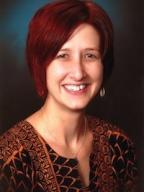
Mentor Bio
Dr. Aimee Glocke is a Professor of Africana Studies at CSUN. Her education includes: B.A. in English, Sociology, and Racial and Ethnic Studies from the University of Wisconsin, La Crosse. M.A. in Afro-American Studies from UCLA. Ph.D. in African American Studies from Temple University. Her research interests include African/Black Literature, African/Black History, African/Black Dance, African/Black Psychology.
Background and Purpose
Although there has been research published on how Black Studies (i.e. Black History) positively affects Black students in K-12 (Banks, 1969; Hare, 1969; Roth, 1969; Adams, 1970), most of the studies have focused on the affect Black Studies has on university students (Black and Non Black) because that is where Black Studies is most pervasive (Clements, Jr., 1970; Carey and Allen, 1977; Johnson, 1984; Livingston et al, 2010). However, little research has been published on teaching Black Science in grades K-12 or, more specifically, on teaching Black Science in an African Centered Way to Black and Non Black (i.e. Asian, Latino/Chicano, American Indian, European, etc.) K-12 students. Therefore, this project will help to fulfill the original mission of Black Studies by training BUILD students to use their background and experience in science (i.e. Psychology, Sociology, Biology, Biochemistry, Chemistry, Physics, etc.) to teach African Centered lessons on Black Science in grades K-12 in order to increase the students’ cultural consciousness, cultural awareness, and cultural identity.
Research Question or Hypothesis
How does learning about Black Studies, or more specifically Black Science, in an African Centered Way, in grades K-12, increase not only Black students’ cultural consciousness, cultural awareness, and cultural identity; but, all students’?
Method
Contact the principals of K-12 schools near CSUN with a significant Black and Non-Black student population and offer to teach lessons in Black Science. Meet with the teachers to discuss ideas for lessons; have BUILD students research, design, and teach the lessons to the K-12 students; test the results using mixed methods; analyze the results to confirm if the research supports our hypothesis that learning about Black Science in an African Centered Way increases the cultural consciousness, cultural awareness, and cultural identity of both Black students and Non Black students. We will use mixed methods, both qualitative and quantitative, to measure the results including surveys of the K-12 students (pre and post the lessons); observations of the K-12 students during the lessons; and interviews after the lesson(s) with the K-12 students, teachers, parents, principals, and BUILD students.
Student Roles
Sophomores and Juniors — Learn African Centered Pedagogy; conduct research on Black Science topics; develop age appropriate/African Centered lesson plans; teach lessons under student/faculty supervision; learn quantitative and qualitative research design and analysis to assist with surveys and observations.
Seniors — Additionally: review and offer feedback on the lesson plans of the younger students; teach lessons without faculty supervision; help design the survey; analyze survey data; observe students during lessons; analyze observation data; assist in interviews with K-12 students, teachers, parents, principals, and BUILD students; analyze interview data.
Conferences Typically Attended — Conferences usually attended: National Council for Black Studies (NCBS), African Heritage Studies Association (AHSA), National Association of African American Studies (NAAS).
Publications
Anthropology
Chin-Hsin Liu

NOT ACCEPTING NEW MENTEES*
Mentor Bio
I am a biological anthropologist specialized in bioarchaeology- the study of human skeletal remains from archaeological context. Paleodietary reconstruction using stable isotope analysis and paleopathology are my main methods. Key geographic foci are Southeast Asia (Thailand, Philippines) , East Asia (Taiwan), and West Mexico (project in development). Ph.D. 2012, University of Florida M.A. 2005, University of Florida B.A. 2002, National Taiwan University
Background and Purpose
Bioarchaeology is the study of human skeletal remains in archaeological context. By observing skeletal and dental pathologies and reconstructing dietary patterns, human skeleton can inform us about past life history, community organization, movement, identity, social structure, and environmental change, just to name a few. These topics are relevant to our current societal discourse as we face impacts of globalization, migration, and climate change. Keywords:Archaeology, human skeleton, bone chemistry, paleopathology, health, prehistory
Research Questions or Hypothesis
This project aims to explore issues of skeletal health disparity, recourse procurement, migration pattern, and regional interaction of the people once lived during the Post-classic period in modern day West Mexico. This area was a key corridor of interaction in terms of material trade, ideology, and biological admixture both before and after the abandonment of major Maya cities (Post-classic Maya). Despite being at the crossroads of cultural and biological exchange between North and Central America, this area has received relatively less scholarly attention, especially in bioarchaeology, than other Maya and peripheral sites.
Method
These research interests will be addressed by analyzing the human skeletal remains excavated from five archaeological sites in West Mexico. The collection is currently curated in the Fowler Museum (UCLA). The analytic process has three phases, with heavy involvement of scientific methods and medical concepts. An inventory of the remains will first be conducted by identifying and recording the skeletal elements available and their state of preservation. Macroscopic observation of paleopathology and health markers (e.g., trauma, congenital abnormalities, development/nutritional stress markers, infectious diseases, etc.) will follow. Microscopic and histological studies will be conducted to enhance differential diagnosis when warranted. The third phase will involve sample selection and laboratory work to extract collagen and purify hydroxyapatite for stable isotope analysis in the mass spectrometry. Statistical analyses will be performed after viable data are collected.
Student Roles
Students have the opportunity to assist in conducting literature research to understand geographic and temporal context of the sites. I will provide training on handling human skeletal remains and laboratory safety before helping with inventory, paleopathological observation, and bone chemistry lab work. Students will learn how to estimate sex and age of a skeletal individual, identify pathology and health markers, and perform basic statistical analyses. Students will also participate in the preparation of manuscripts for publication and have opportunities to present in conferences.
Expectations
I welcome students who are motivated, disciplined, and responsible. Students must be able to follow directions well and are expected to behave professionally when conducting research on human skeletal remains. Students with backgrounds in anthropology, biology, museum studies, or Central American history and culture are preferred but not required. Students who are interested in pursuing higher degrees or careers in anthropology, museum curation and management, forensic sciences, criminal justice, biochemistry, and medical professions are highly encouraged to participate in this project.
Conferences Typically Attended
Western Bioarchaeology Group Meeting, Annual Meeting of Paleopathology Association, Society for American Archaeology, and American Association of Physical Anthropologists (particularly in the Undergraduate Research Symposium).
Geography
Luke Drake
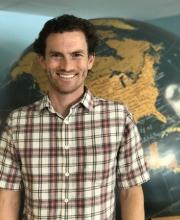
Mentor Bio
To date, I have conducted research at neighborhood, urban, and national scales through studies in Florida, New Jersey, California, and through a U.S. and Canada national survey. Current projects are located in Southern California and the South Pacific country of Vanuatu. Ph.D. 2015, The State University of New Jersey, M.A. 2010, University of Miami, B.S. 2002, University of North Carolina.
Title of Research Project
My research contributes to CSUN BUILD PODER objectives through theoretically-informed and empirically-grounded investigation of urban food systems. Food access and nutrition are two issues that are underscored by geographical disparities. Interventions often include gardens and farmers' markets, whose health benefits have been noted through inter-disciplinary research. However, relatively little knowledge about the geographies in which these interventions are proposed and carried out.
Background and Purpose
My research aims to create knowledge on 1) which places should be targeted for interventions such as gardens and markets; 2) how and why these interventions serve the neighborhoods they are intended to serve, and 3) the processes through which garden and markets succeed or fail to deliver health outcomes.
Research Questions or Hypothesis
What are the spatial patterns of food access and distribution that may lead to uneven health outcomes? Where are farmers' markets, gardens, and food retail located, and are they associated with demographic trends? Is the food distributed at the locations consumed by residents of those neighborhoods or elsewhere? Do urban residents acquire food from markets or gardens, and if so, where? Why and how do these spatial patterns form? Why do farmers choose certain farmers' markets over others? How do urban residents become involved in and sustain garden efforts? What processes lead to urban residents taking up or rejecting participation in food security interventions?
Method
These research questions require the use of mixed methods. My research has employed qualitative and quantitative methods, including interviews, participant observation, focus groups, archival research, surveys, spatial statistics, and geographic information systems (GIS). Primary data collection through fieldwork, as well as secondary data collection from federal, state, and local sources is used. I have also developed and used web-based mobile mapping and GIS applications. Analytical methods include the identification of themes from coded qualitative data through NVivo software, discourse analysis of archival materials, spatial statistics in GIS and SPSS software. Since my research draws on multiple epistemologies and not just mixed methods, analysis with rely in some cases on statistical significance through large sample size and in others on analytical generalization through the small sample size and context provided by case studies.
Student Roles
Data collection opportunities for students include the selection and pre-processing of secondary datasets using Microsoft Excel and ArcGlS; fieldwork to collect location and attribute data on urban food systems; advanced students can also assist in the collection of qualitative data through interviews and observations. Data analysis opportunities include the processing and management of data; tabulation of descriptive and inferential statistics using Excel, SPSS, and ArcGlS; transcription and coding of qualitative data using NVivo. Advanced students can assist in many-to-many database design and management, web programming, advanced GIS analysis and modeling, cartography in Adobe Illustrator, and the design and maintenance of web-based data tools such as ArcGlS Online and ArcGlS Collector.
Expectations
This research should be of interest to students interested in the intersection of health and related topics such as urbanization, sustainability, environmental justice, and economy.
Conferences Typically Attended
California Geographical Society; Association of Pacific Coast Geographers; American Association of Geographers.
Edward Jackiewicz

Mentor Bio
Research interests include Urban, Tourism, and Migration/Transnationalism. Ph.D. 1998, Indiana University, M.A. 1993, Temple University, B.S. 1983, Arizona State University
Background and Purpose
My research is community-based examining the spatiality of health disparities in California, looking not only at racial and ethnic divides, but also socioeconomic and geographical (rural, suburban and urban). I am interested in the inequities in environmental exposure as well as how health services are accessed and delivered.
Research Questions or Hypothesis
Are certain diseases and health issues more prominent in certain locations? What are the barriers to a more equitable health system? Which groups are more prone to inferior health treatment? How has the Affordable Care Act altered previously existent health disparities? How can the healthcare experience for undocumented individuals be improved?
Method — Research will be conducted using both existing (secondary) data and by gathering primary data through surveys as well as more in-depth interviews with various stakeholders as well as community members.
Student Roles
Students can participate in this research through various activities from the very early stages of a project such as reading relevant literature, writing literature reviews, designing surveys, manipulating and analyzing data, collecting data, mapping geographic phenomenon, and writing publishable articles.
Conferences Typically Attended
There are several conferences that I frequently attend, including: The Association of American Geographers (Spring), Association of Pacific Coast Geographers (Fall), California Geographical Society (Spring), and the National Health Disparities Conference.
Regan Maas

Mentor Bio
Ph.D. 2010, University of California Los Angeles M.A. 2005, California State University Northridge B.S. 2001, Iowa State University B.S. 1998, University of Iowa
Background and Purpose
My specific research area is focused within Minority Health Disparities (specifically Hispanic populations), emphasizing Spatial Demography, Urban Neighborhood Dynamics, and GIS applications. This research focuses on both compositional and contextual variables, including socioeconomic measures, health outcomes measures, as well as neighborhood contextual measures such as social networks, residential choice and mobility, and spatio-temporal activity space.
Research Questions or Hypothesis
My research projects test the idea of spatially segmented cultural adaptation as a framework for unraveling the spatial and cultural differences in health outcomes across Hispanic/Latino neighborhood contexts and its relationship to the 'Hispanic health paradox'.
Method
Datasets include cutting-edge geospatial data. Spatial and non-spatial statistical techniques as well as geographic information systems (GIS).
Student Roles
Students would be exposed to working with large datasets including work with cutting-edge geospatial data. Students would be responsible for collecting and analyzing data using both spatial and non-spatial statistical techniques as well as geographic information systems (GIS). Students would gain skills in data collection/manipulation, hypothesis building, and data analysis for minority health disparities research through the lens of the geospatial sciences.
Psychology
Thomas Chan

Mentor Bio
I was raised in a Chinese restaurant by immigrant parents and grandparents. I was always at the intersection between older adults, the community, and technology. My work reflects this intersection by finding ways to leverage community assets and technologies to enhance health and functioning for underserved aging adults and their families. I received my Ph.D. in Positive Developmental Psychology from Claremont Graduate University—where I learned the science of “the good life.” Then I have received funding from The National Institute of Health/National Institute on Aging to sponsor my Postdoctoral Fellowship in Epidemiology, Biostatistics, and Mental Health of Aging at Johns Hopkins Bloomberg School of Public Health—where I honed my abilities to develop and evaluate engaging technologies to improve the health and well-being of at-risk aging adults and their families.
Title of Research Project
The Positive Aging Research and Development (PAR-D Lab; www.par-d.com), develops and evaluates immersive technologies that aim to enhance health and well-being. We created the World’s First MagicLeap Augmented Reality marriage proposal (https://www.youtube.com/watch?v=l5goSpBuwZY&t=). We are currently teaming with NASA, medical institutions, community organizations, and technology companies on augmented reality and artificial intelligent projects to improve health, functioning, and educational outcomes.
Background and Purpose
Augmented reality (holograms) that are powered by artificial intelligence (AI) are changing the way we live and go about our day—accelerated by the global COVID-19 Pandemic. The mass of these technologies are designed for people who are privileged enough to afford them. The PAR-D Lab’s focus is to flip the script on how these BLEEDING EDGE technologies are designed and developed by creating scalable win-win interventions based on the needs of underserved aging adults and their families.
Research Questions or Hypothesis
(a) How do we leverage augmented reality technologies to improve health and well-being of aging adults and their families? (b) How do we create physically and cognitively engaging activities that boosts mental and functional health outcomes? (c) How do we develop augmented reality solutions to improve the quality of life of people who are suffering from cognitive impairments? (e.g., mild cognitive impairments, Alzheimer’s Disease)?
Method
I leverage a mixture of applied methodologies (e.g., qualitative, ethnographic, and quantitative methods, along with eye tracking) to answer research questions on user experience, psychological engagement, user buy-in, usability, value, and effectiveness. I also use structural equation modeling and growth mixture modeling to explore mechanisms and subpopulations.
Student Roles
Computer science students with experience in coding (e.g., C#, Unity, Java Script) will be trained to develop applications to improve health outcomes. Engineering students with experience with sensors will be trained to create scalable methods of early detection of diseases and disabilities. Psychology students with experience in research and statistics will be trained to evaluate community-based interventions and user experiences. Art and design students with experience in animation and special effects will be trained to design characters and animations for augmented reality and mobile platforms.
Expectations
Must be able to work in a start-up-like environment—fast-pace, many unknowns, open-minded, willing to learn anything—and be passionate about the PAR-D Lab’s mission to improve the lives of people who come from underserved communities.
Conferences Typically Attended
The Gerontological Society of America (www.geron.org); Society for Neuroscience (www.sfn.org); International Positive Psychology Association (www.ippanetwork.org); Unity Conference (www.unity3d.com); Cognitive Aging Conference (http://cac.gatech.edu/cognitive-aging-conference); Alzheimer’s Association Interventional Conference (https://www.alz.org/aaic/overview.asp).
Publications
Selected Publications (full list: http://par-d.com/wp-content/uploads/2019/02/T.Chan_CV_2-2019.pdf)
Boeder, J.*, Tse, D. C. K., Fruiht, V., & Chan, T. (2020). Medium matters: A decade of media consumption predicts positive and negative self-perceptions of aging. Journals of Gerontology: Psychological Sciences.
Boeder, J.*, Hwang, S.*, & Chan, T. (2020). Engagement with life among the oldest-old in assisted living facilities: Enriching activities and developmental adaptation to physical loss. Ageing & Society.
Chan, T., Parisi, J.M., Moored, K.D., & Carlson, M.C. (2018). Variety of enriching early life activities linked to late life cognitive functioning in urban community-dwelling African Americans. Journals of Gerontology: Psychological Sciences.
Moored, K.D., Chan, T., Varma, V.R., Chuang, Y., Parisi, J.M., & Carlson, M.C. (in press). Engagement in Enriching Early Life Activities is Associated with Larger Hippocampal and Amygdala Volumes in Community-Dwelling Older Adults. Journals of Gerontology: Psychological Sciences
Chan, T. (2019, February). Making aging magical: Using augmented reality for promoting health interventions and engaging medical assessments. Symposium presented at Medical Design & Manufacturing West Conference, Anaheim, CA.
Carlson, M.C., Chan, T., Adam, A., Ahmad, O., Roy, P., Rosano, C., Rosso, A., Krakauer, J. (2018, November). Piloting a virtual reality application to promote executive function and community mobility in aging adults. Symposium presented at Gerontological Society of Aging Annual Scientific Meeting, Boston, MA.
Key Words
#augmentedreality #community-basedinterventions #immersivetechnology #mixedreality #magicleap #spatialcomputing #psychologicalengagement #flowtheory #positivepsychology #biotech #mentalhealth #cognitivehealth #preventionintervention
Gabriela Chavira, Principal Investigator of BUILD PODER
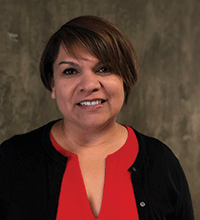
Mentor Bio
Dr. Chavira is the Co-Director of BUILD PODER, focusing on the student core. All of her research projects focus on successful transitions to adulthood for immigrant and ethnic minority youth. Ph.D. 2003, University of California Santa Cruz B.A. 1994, California State University Northridge.
Current Research Projects:
Developing College Awareness and a College-Going Identity in Latina/o Youth (Current Status: recruiting a 2nd cohort of participants; follow-up with 1st cohort).For this project, we developed a series of workshops for Latina/o parents and their adolescent youth (early adolescence through late adolescence) with the aim to a) increase their college knowledge, b) provide instrumental support and guidance navigating the college application process, and c) increase the number of Latina/o youth who apply for and enroll in four-year colleges and universities. Workshops will be conducted in Spanish and English for parents and in English for Latina/o youth. We will be examining psychosocial factors that may contribute to their retention in the workshop series and persistence towards college enrollment.
Adolescent Academic Achievement: Psychological Functioning and Cultural Discontinuity Project (current status: coding, analyses, and report-writing). This research project, funded by the National Center on Minority Health and Health Disparities (NCMHD), a branch of the National Institutes of Health’s Research Infrastructure in Minority Institutions (RIMI), focuses on the cultural discontinuity or “mismatch” between the home and school environments and how these may contribute to the underachievement and psychological dysfunction of Latino youth. This dataset includes three waves of data collection. We are currently entering interview data in preparation for coding and analyses.
Mentoring Matters Research Study (Current status: analyses and report-writing) This research project has partial support by the National Institutes of Health (NIH) Enhancing the Diversity of the NIH-Funded Workforce Initiative. The goal of this study is to understand the mentor-mentee relationship in biomedical and behavioral sciences at CSU Northridge. I posit that if the NIH wants to increase the number of students who pursue graduate studies in the sciences, we needed to understand the current climate of mentoring at our university. This project is now complete, but we are currently analyzing the results in preparation for report-writing.
Method
Qualitative and Quantitative
Student Roles
For all of research projects, students will learn how to: (a) conduct a literature review and annotate bibliographies, (b) code and analyze data (quantitative and qualitative), and (c) prepare presentations for regional and national professional conferences. In specific projects students will learn to: (a) translate and transcribe interviews of families, (b) recruit participants, (c) participate in data collection and data entry, (d) develop codebooks for analyses, (e) use software (NVivo, SPSS, Qualtrics).
Stefanie Drew

Mentor Bio
I received my doctorate from the University of California, Irvine in Cognitive Psychology. After getting my Ph.D., I completed post-doctoral work in a neuroimaging lab where I conducted neuroimaging research utilizing functional magnetic resonance imaging (fMRI) of the human visual cortex. Subsequently, I completed a NIH funded post-doctoral position at Western University of Health Sciences College of Optometry, where I was trained in utilizing oculomotor measurements to examine symptoms of asthenopia, or visual discomfort. After this position, I was delighted to join the faculty at CSUN and now run the Visual Information Sciences and Neuroscience (V.I.S.N.) Lab in the Department of Psychology. I take great joy in teaching, mentoring students, playing video games and training in krav maga.
Title of Research Project
An inter-disciplinary investigation of the impact of immersive virtual reality practice on visual abilities. Visual Information Sciences and Neuroscience (V.I.S.N.) Lab (check out the V.I.S.N. lab's website).
We have weekly lab meetings with my entire team in a collaborative environment where students work together on different projects. Students will have the opportunity to be involved in multiple projects as well as be the lead researcher on projects and design a study with me if they develop their own question of interest in one of our areas of research. My students and I typically present at annual meetings of Society for Neuroscience (SFN) and Association for Psychological Science (APS) and/or Technology, Mind and Society (TMS). Currently our topics of interest include examining ways to utilize virtual and augmented reality systems, examining visual discomfort systems under pandemic conditions (e.g. “Zoom fatigue”), studying visual attention and visual discomfort symptoms, and examining different commercially available electroencephalograms (EEG). For greater detail, please view our site at: https://stefaniedrew.wixsite.com/visnlab
Background and Purpose
New virtual reality systems have recently emerged on the commercial market and are being used across a wide variety of disciplines, from job training to physical therapy, biological imaging to psychological therapy. However, little is known about the impact of these new systems on the user. We aim to examine the impact of these systems on the oculomotor and cognitive functions of the user before and after training in virtual environments.
Research Questions or Hypothesis
We anticipate a greater negative impact on those trained in virtual reality environments compared to those trained in the real world.
Method
We collect quantitative data and analyses on a variety of measures. These include optometric measurements, eye tracking recordings, neuroimaging output, behavioral responses (i.e. reaction times) as well as self-report survey data.
Student Roles
Students in my lab are trained on a variety of techniques that include optometric measurements, eye tracking and neuroimaging. Students will be involved in data collection and analysis, as well as dissemination though poster presentations and possibly manuscripts.
Expectations
I am looking for students that are passionate about research and eager to learn and gain experience with neuroimaging, eye tracking or virtual reality. We have weekly lab meetings with my entire team in a collaborative environment where students work together on different projects. Students will have the opportunity to be involved in multiple projects as well as be the lead researcher on projects and design a study with me if they develop their own question of interest in one of our areas of research.
Conferences Typically Attended
My students and I typically present at annual meetings of Society for Neuroscience (SFN) and Association for Psychological Science (APS)
Publications
please view a sampling of our work at www.csun.edu/~sdrew
Key Words
electroencephalogram (EEG), neuroimaging, virtual reality, VR
Tara Fahmie

NOT ACCEPTING NEW MENTEES*
Mentor Bio
Dr. Fahmie is a behavior analyst with over 10 years of experience providing assessment and intervention services to children, adolescents, and adults with a variety of abilities. Her current passion is to study the development and prevention of behaviors like aggression and disruption in young children. Please check out her website.
Title of Research Project
Strategies to prevent the development of severe problem behavior in children
Background & Purpose
The purpose of this research is to design effective tools for the screening of emerging problem behavior and the prevention of severe problem behavior in young children with and without intellectual and developmental disabilities.
Research Question(s) for Hypothesis
We hypothesize that paying close attention to the immediate consequences of problem behavior in young children will enhance early detection and prevention strategies. These tools ultimately will enhance the quality of life for children and families of many abilities and backgrounds.
Method
Mixed method (primarily quantitative). Targeted skills will be assessed using direct observation and behavioral measurement systems. Specifically, students will observe children during arranged activities and will collect data on functional skills (e.g., communication, play) and problem behavior (e.g., aggression, disruption) using iTouches running ABC DataPro software. In addition, students will record measures of experimenter integrity to identify whether the intervention is being implemented as planned. Data will be analyzed using graphic display of behavior change over time and will be discussed during weekly lab meetings.
Student Roles
All research occurs off site, at established community partnerships. Students will be responsible for traveling to the site of the research, fostering collaborations with the community partner, collecting and analyzing data, graphing results, and discussing data during weekly meetings. Students will gain experience in direct observation, behavioral measurement, single-subject experimental design, and visual analysis of data.
Expectations
Students can expect to participate in all levels of my community-based action research. This includes assisting with the: design of the study, implementation of sessions with children, in-vivo and video data collection, data review and analysis, and dissemination (via posters and presentations at local, national, and perhaps international conferences). Students can expect me to be a hands-on mentor who is closely monitoring their progress and tailoring their experience to best meet their personal goals. Students can also expect a lot of open, honest feedback in both directions (me to them, and them to me).
Conferences Typically Attended
California Association for Behavior Analysis, Applied Behavior Analysis International, CSUNPosium
Publications
All of my publications can be found and full texts can be requested at ResearchGate. Also, please see my website for my CV and link to full texts of my publications.
Elise Fenn
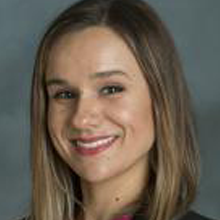
Mentor Bio
I am a cognitive psychologist and am interested in understanding cognitive mechanisms such as memory and decision-making, broadly. Specifically, I am interested in two main lines of research: (1) how the understanding of cognitive mechanisms can be applied towards improving the legal system (specifically investigative interviewing and detecting deception), and (2) investigating factors that bias judgments of truth when making truth judgments rapidly, such as in a social media environment. I received my PhD in 2015 from Claremont Graduate University. I have been working as a faculty member at California State University Northridge since 2015 teaching Cognitive Psychology of Memory at the graduate and undergraduate level, and Research Methods for Psychology. Here is a link to my research gate profile page: https://www.researchgate.net/profile/Elise_Fenn.
Title of Research Project
Cognitive and Social Factors that Impact Truth Biases in a Social Media Environment
Background and Purpose
Humans make rapid judgments of truth daily, such as when scrolling through social media feeds. While these rapid judgments of truth may seem meaningless in the moment, the potential long-term consequences may impact meaningful areas of life, from health choices, to political decisions, to understanding news headlines. During these rapid judgments, the availability of "non-probative" information can increase bias to believe the information is true. For example, a series of studies found that presenting a related, but uninformative photo (e.g., a photo of a turtle) alongside a trivia statement ("turtles are deaf") increased bias to believe that information was true. In this research project, we investigate whether the effect of nonprobative information persists within a social media environment, and what cognitive mechanisms underlie this effect. Further, we examine methods for reducing the unintended influence of nonprobative information on truth biases.
Research Questions or Hypothesis
In this research project, I am interested in answering the question, "What cognitive mechanisms underlie the effects of nonprobative information on truth biases in a social media environment?" and "What methods can be used to reduce the influence of nonprobative information on truth biases in a social media environment?" A particular emphasis will be places on understanding the influence of nonprobative information in several applied areas, including: health behaviors, political beliefs, memory for news headlines, and jury decision-making.
Method
This research is Quantitative. The method of data collection will most likely be designing an experiment via in-person and online methods. You may develop surveys and also design materials to be administered on a computer screen via programs such as Inquisitor EPrime software. You may also analyze data using SPSS, Excel, or R software.
Student Roles
Students will be responsible for conducting hypothesis-driven literature reviews, collecting data inperson or online, designing and creating materials using computer software programs such as Qualtrics, Inquisit, or EPrime, analyzing data using SPSS, R, Excel software, presenting and disseminating data at regional or national conferences, and the opportunity to publish in peer-reviewed journals pending student contributions to the project.
Expectations
I expect students to have an interest in understanding cognitive psychology, and experimental psychology. A student in lab will gain knowledge on all aspects of the research project, from project creation to project dissemination. I hope to provide students with a supportive lab environment and help them accomplish their goals of becoming psychological scientists.
Conferences Typically Attended
American Psychology-Law Society, Association for Psychological Science, Society for Applied Research in Memory and Cognition, Psychonomic Society, Western Psychological Association
Publications
Please see my research page: https://www.researchgate.net/profile/Elise_Fenn
Sun-Mee Kang
Mentor Bio
I am a social and personality psychology with expertise on statistical data analyses and research methods. I have been mentoring students at UC Davis, University of Notre Dame, and CSUN for over 20 years. All of my research projects focus on the psychological factors that contribute to social adaptation, including emotion, personality, social working memory, and acculturation strategy.
Research Projects
Three projects are currently undergoing in my research lab. In these projects, my students and I explore fine-grained differences in the brain activities of individuals with depression, social anxiety, or antisocial personality traits when they process emotional information.
Background and Purpose
Negatively valenced information attracts more attention than positively or neutrally valenced information, and this greater sensitivity to negatively valenced information is referred to as the negativity bias. By measuring the late positive potential (LPP), previous studies have reported that the LPP amplitude was much higher in the negative emotion condition compared to the other emotion conditions. The current projects are designed to explore whether individuals with certain psychological disorders would display the same negativity bias while they process emotion informational information using the Electroencephalogram (EEG).
Research Questions or Hypothesis
Past research has demonstrated that individuals with high degrees of psychological disorders such as depression, anxiety, or antisocial personality traits show an early processing deficit compared to individuals with low degrees of psychological disorders by focusing on P100 and P300 peaks in the Event-Related brain Potential patterns. However, few studies have explore a lack of the negativity bias using the LPP. The main purpose of the current study is to explore a moderating effect of the psychological disorders on the negativity bias. Based on previous research, it is predicted that individuals with high degrees of the psychological disorders would not display the negativity bias compared to individuals in the comparison groups.
Method
Quantitative method. We are using an experimental design. We present study stimuli on a computer monitor using E-prime (by Psychology Software Tools. This is a comprehensive software available for behavioral research) and record brain waves using Brainvision recorder while participants take computerized tests.
Background and Purpose
While overt racial discrimination has decreased, subtle forms of discrimination continue to persist in US. Modern day discrimination, also known as racial microaggression, is defined as daily verbal and noverbal behaviors that convey negative racial slights and insults (Sue & et al., 2007). Due to its subtlety, when minority members are treated unfairly, they have difficulties to label the situation as racial discrimination (Noh & et al., 2007). Given the complexity of racial discrimination in current society, how individuals process such ambiguous experiences and what impacts it would have on psychological and physical health are not well documented.
Research Questions or Hypothesis
Our lab is exploring whether people have subconsciously learned to focus on nonverbal cues, such as facial expressions, when anticipating that they may be discriminated against. To address this question, we are currently evaluate the effects of priming minority status on emotion recognition accuracy tests among people of color, using the implicit and explicit priming methods.
Method
Quantitative method. We are using an experimental design. We present an emotion recognition test and other computerized tests using Inquisit Lab (a powerful tool for designing and administering psychological tests and experiments on computers).
Student Roles
Students who are involved in these projects will receive comprehensive training to be a qualified research assistant including how to run an EEG study and analyze EEG data. They will also learn how to design a study using E-prime to develop study stimuli. Students will learn how to do a literature review and comprehend empirical papers by weekly lab meetings. They will learn how to write an abstract for presentation and how to present their studies at various conferences. They will be also invited to write a manuscript together for publication.
Expectations
Our lab is looking for students with strong motivation, persistence, passion, and dependability, and maturity.
Conferences Typically Attended
Society for Neuroscience, Association for Psychological Science, American Psychological Association, Society for Personality and Social Psychology, Western Psychological Association
Justin Kanter
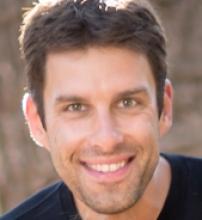
NOT ACCEPTING NEW MENTEES*
Mentor Bio
Most of the decisions we make are based on some form of supporting evidence from memory, yet memory is notoriously faulty. My research examines the biases that help us come to decisions (often erroneously) when evidence from memory is incomplete. My focus is on recognition memory judgments, which entail a decision as to whether a presented stimulus was also encountered earlier in the experimental session (an "old" item) or was not encountered earlier (a "new" item). In a recognition memory task, participants may exhibit a bias to err on the side of "old" responses (a liberal bias), "new" responses (a conservative bias), or neither (a neutral bias). My research (Kantner & Lindsay, 2012, 2014) demonstrated that recognition bias is relatively stable within an individual and behaves like a cognitive trait, one with potentially broad significance for cognition and behavior. Ph.D. 2011, University of Victoria M.A. 2005, Indiana University B.A. 2000, Purdue University.
Background and Purpose
A number of studies have examined the relationship of response bias to neural and behavioral pathologies, with strikingly consistent results: compared to appropriate controls, recognition criteria are more lax in elderly individuals, patients with Alzheimer’s disease, patients with dementia, patients with schizophrenia, individuals with mental retardation, and individuals with panic disorder. These findings strongly suggest that interventions aimed at improving decision making in these populations should focus on this lax tendency, which may indicate a degraded ability to engage top-down control mechanisms that normally keep individuals from making memory decisions based on weak evidence. Such individuals may adopt false beliefs (e.g., accepting false claims as true or false memories as accurate) that might be averted with the use of a stricter criterion when evaluating the evidence for those beliefs. Training in the use appropriate decision criteria does not require improvements in memory acuity per se (which may be difficult or impossible in some individuals) and could substantially improve decision making in individuals with these conditions. Such training may also be applied in the domains of eyewitness memory, medical diagnosis, security, and law enforcement, settings in which errors due to inappropriate decision criteria can carry disastrous consequences.
Method
Two experiments will test the relationship between decision bias and false memories and false beliefs. Another will use a technique called “content analysis” to understand the rationale behind the decisions of lax versus strict recognizers. A fourth will test novel procedures for training decision bias when recognition decisions are extremely difficult.
Student Roles
Students have the opportunity to assist in multiple experiments related to understanding decision bias and training it in memory impaired individuals. Students at any level can assist in all phases of the research, from experimental design and gathering of stimuli to running participants in experiments, conducting descriptive and inferential data analyses using common statistical software packages, and, potentially, preparation of manuscripts and presentations at conferences such as the Psychonomic Society and Association for Psychological Science annual meetings.
Ellie Kazemi
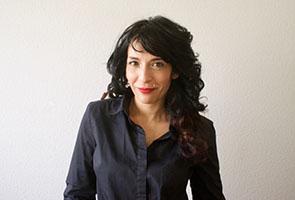
Mentor Bio
I have been privileged to have the opportunity to mentor research assistants at my Ph.D. program at UCLA and as a faculty member in the Psychology department at CSUN for the past 14 years. I aspire to shape my incoming students into skilled scientists and effective team-players so that they can contribute in the ways they hope and become leaders. My mentoring style consist of a tiered mentorship model, which means senior researchers provide supervision, support, and training to new researchers.
Title of Research Project:
Behavior Science and Technology
Purpose and Background
Some of our projects are focused on how we can use technology (e.g., robotics, virtual reality, computer-based programs) to develop effective, efficient clinical training for caregivers, teachers, therapists, and supervisors. We aim to develop high quality training materials to provide our learners hands-on experience, opportunities for practice and making mistakes in safe environments, and individualized timely feedback. For example, we have used a humanoid robot to simulate a child with problem behaviors so that we can study how adults respond under such circumstances. That way, we can provide more effective trainings to such individuals so that they feel better equipped before working with real children. We often collaborate with community agencies (e.g., behavior analysis clinics, schools, fire department) for our projects. Currently, we have projects funded by NASA in collaboration with the Autonomy Research Center for STEAHM. This is a great opportunity for my mentees to collaborate with students from other departments and JPL scientists. Our research lab is very active. You can see our current members and work by going to our lab website.
Research Questions or Hypothesis
Some questions we pose in our training research include: Can we use Artificial Intelligence to create real dynamic interactions in simulations to provide hands-on, safe training to practitioners? What is necessary for virtual reality training to go beyond increasing test-scores and actually increase clinical skills? Why do some parents go back to their old ways of parenting instead of use the skills they learn in training? Does timing of feedback matter? Additionally, our projects funded by NASA look into: what are the strategies for increasing the number of robots a team of human operators can supervise at one time? How can behavior science help improve how autonomy researchers and engineers measure team performance and work load?
Methods
We use mixed research designs including group and single-subjects. Most of our dependent variables involve direct observation and recording of data.
Student Roles: Depending on your interests, we will involve you in all aspects of the research process. You will gain experience in developing technology-based trainings for our community partners, observing and recording behavioral data, conducting literary searches, designing studies and experiments, presenting posters or symposia at conferences, and much more!
Expectations
I know that mentorship needs to be a two-way relationship to succeed. I encourage open communication and honesty from my mentees. I allow my mentees to help me guide them and work with me in reaching their goals. I strive to recruit those who are eager to learn, improve, and take advantage of opportunities. That is what makes regularly soliciting feedback from lab peers and myself such an integral part of our lab. Finally, we are a very familyoriented lab. In other words, we maintain a culture of kind, thoughtful, and caring behavior towards one another.
Conferences Typically Attended
California Association for Behavior Analysts (CalABA) and Association of Behavior Analysts International (ABAI)
Publications
Almost all of my publications are with student co-authors and can be found at our lab website www.csun.edu/~klab
Debbie Ma
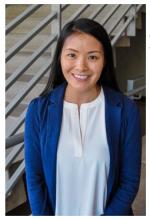
NOT ACCEPTING NEW MENTEES*
Mentor Bio
My research focuses on stereotyping and prejudice. In my lab, we utilize implicit measures of stereotyping and prejudice to reveal unconscious biases that people may have. More recently, we have also been collaborating with Dr. Just Kantner's lab to explore research surrounding racial categorization of racially ambiguous individuals, such as those who might be low in racial prototypicality or those who are biracial/multiracial.
Title of Research Project
Stereotyping & Prejudice and Biracial Face Perception
Background and Purpose
The aim of our work is to better understand the conditions that promote bias, so that we can ultimately create interventions that might attenuate stereotyping and prejudice.
Research Question(s) or Hypothesis — What facial features correspond with accurate racial categorization? Why is it difficult for people to correctly categorize biracials as biracial? What are some individual differences that might moderate how a person racially categorizes others?
Method
Quantitative. In-lab experiments, online experiments.
Student Roles
Students can take on a host of responsibilities from data collection, analysis, writing up research, presenting posters, and in some cases coming up with novel research questions and co-authoring papers.
Expectations
I expect lab members to be involved, reliable, and willing to learn. Students should be able to dedicate 5-10 hours a week to data collection, lab meetings, and other lab-related projects.
Conferences Typically Attended
Society of Personality and Social Psychology
Publications
Ma, D. S., Kantner, J., Benitez, J., & Dunn, S. (in press). Are morphs a valid substitute for real multiracial faces in race categorization research. Personality & Social Psychology Bulletin
Ma, D. S., Correll, J., & Wittenbrink, B. (2018). The Effects of Category and Physical Features on Stereotyping and Evaluation. Journal of Experimental Social Psychology, 79, 42-50.
Ma, D. S., Koltai, K., McManus, R., Bernhardt, A., Correll, J., & Wittenbrink, B. (2018). Race Signaling Features: Identifying Markers of Racial Prototypicality among Asians, Blacks, Latinos, and Whites. Social Cognition, 36, 603-625.
Correll, J., Hudson, S. M., Guillermo, S. & Ma, D. S. (2014), The Police Officer's Dilemma: A Decade of Research on Racial Bias in the Decision to Shoot. Social and Personality Psychology Compass, 8, 201-213.
Jonathan Martinez

Mentor Bio
Ph.D., 2013, UCLA (Clinical Psychology) M.A., 2009, UCLA (Clinical Psychology) M.A., 2007, SDSU (Psychology) B.A., 2002, UCI (Psychology)
Purpose and Background
In child psychotherapy, parents’ active participation in their child’s mental health (MH) treatment is imperative, with children faring better when parents are actively engaged in treatment relative to individual child treatment (Dowell and Ogles 2010). Yet, when families - particularly those from ethnic minority and socially disadvantaged backgrounds - initiate services, they often experience significant barriers to therapy engagement (Kazdin, 1996). Knowledge and beliefs about MH problems and treatments, referred to as MH literacy, appear to be among the most common and explanatory barriers (Jorm, 2000). Thus, developing engagement strategies to target MH literacy gaps are needed. Psychoeducation, an evidenced- based practice used to present factual information about MH problems and treatments (Lukens & McFarlane, 2004), may be a successful strategy for targeting MH literacy barriers and engaging families in care. The proposed research plan has an overall aim of developing and pilot testing a psychoeducation-based enhanced-intake procedure (PEP) for engaging families entering child MH services, with the following specific aims and questions.
Research Questions or Hypothesis
(Aim #1) Develop and refine the PEP in collaboration with community partners. Using a collaborative, iterative approach, feedback from community partners is expected to increase the validity, feasibility, and acceptability of the PEP in usual care (UC) settings, and will answer the following: What difficulties do providers encounter in attempting to engage families in care, and what strategies are used? What are potential benefits/challenges to using PEP? (Aim #2) Examine the feasibility and acceptability of the PEP in a small-scale pilot study. The PEP will be evaluated for feasibility, fit, relevance, utility, and will be refined as needed for UC settings. This will answer the following: Do families and providers find the PEP beneficial in promoting family engagement? How can the PEP be modified to increase feasibility, helpfulness, and utility for engaging families, particularly ethnic minority families? (Aim #3) Implement the PEP in a pilot randomized trial. The feasibility, acceptability, and fidelity of the PEP will be evaluated, as well as the comparative effectiveness of the PEP vs. UC. This randomized trial will answer the following: Does the PEP promote family engagement in care compared to UC? Are there specific subgroups of families (ethnic minority status, SES, acculturation) that benefit more/less from the PEP?
Student Roles
1) Observational coding of therapy session recordings. Students will be trained on a coding system to document therapist behaviors/strategies used to engage families, as well as parent/family behaviors that are indicative of engagement. 2) Semi-structured interviews with participants. Students will be trained on providing semi-structured interviews to participants to document participant perspectives on the PEP. 3) Focus groups with participants. Students will assist the focus group facilitator, and when effectively trained, lead their own focus group with participants.
Expectations
Students will have the opportunity to participate in several facets of research, and will be integral to the success of this research program.
Conferences Typically Attended
This research will give students the opportunity to present study findings at conferences, such as: American Psychological Association, Western Psychological Association, Association for Behavioral and Cognitive Therapies, and UCLA Psychology Undergraduate Research Conference.
Scott Plunkett

Mentor Bio
Ph.D. 1997 in Family Relations and Child Development, Oklahoma State University. M.Ed. 1992 and B.A. in Psychology and Speech/Theater 1986, Northwestern Oklahoma State University
Title of Lab
Adolescent & Adult Adjustment (A Lab). https://www.csun.edu/plunk/
Background and Purpose
The goals of my research are:
(1) to examine family, school, peer, and community influences on emerging adults’ mental health from diverse backgrounds (e.g., SES, ethnicity, deaf, LGB);
(2) to examine ecological validity of mental health measures in emerging adults from diverse backgrounds; and
(3) to evaluate campus programs (e.g., programs to increase retention/graduation of students) and community programs (nutrition classes, gardening classes, free tax help for low-income community).
Methods
Qualitative and quantitative data. Self-report surveys, focus groups, interviews, pretest/posttest designs, cross-section and experimental designs
Student Roles and Expectations
Students work by task in the lab so that they get experience with many different types of research and projects. They will also get experience with Qualtrics, SPSS, R, running various statistical analyses, coding qualitative data, editing research reports, presenting at conferences, etc. Since my office and lab are the same space, I am in the lab 3 days a week with the students, so I spend lots of time with students. My students have been very successful.
Conferences Typically Attended
American Psychological Association, Association for Psychological Sciences, National Council on Family Relations, National Council on Measurement in Education, Society for Research on Child Development, Society for Research on Adolescents, Association for Behavioral and Cognitive Therapies
Publications and Presentations
http://www.csun.edu/plunk/documents/scholarship_plunkett.pdf
Jill Quilici

Mentor Bio
Jill Quilici has 18+ years of experience mentoring high school, undergraduate, and graduate students in research and has previously been Co-Director of a program (with Dr. Saetermoe) designed to prepare under-represented students to pursue doctoral level studies in mental-health related research. Ph.D. 1997, University of California Santa Barbara M.A. 1994, University of California Santa Barbara B.A. 1992, California State University Chico.
Background and Purpose
Jill Quilici studies the relationship between self-regulation and decision-making, focusing on developing and testing interventions to improve self-regulation capabilities. Difficulties with self-regulation have been implicated in many health issues, particularly obesity. This topic is of great significance because of the current obesity epidemic in the United States, which is associated with serious health conditions, including heart disease, stroke, and type II diabetes.
Research Questions or Hypothesis
Some questions her lab is exploring include: Is self-regulation a limited resource which can be depleted or are self-regulation failures due to changes in motivation and/or attention? How do we improve self-regulation capabilities? How do we manage decision-making when faced with conflicting goals (e.g., choosing what to eat when we want to eat healthy, but we also want to eat something very tasty)?
Method
Most research studies in the lab use an experimental approach. A typical study might involve asking participants to carry out a task which involves self-regulation (e.g., controlling emotional expression while watching an intense video or holding one’s arm in icy water as long as possible). Then, some participants participate in an intervention designed to improve self-regulation, while other students (control group) do not. Finally, participants are asked to complete another self-regulation task (e.g., choosing between a healthy vs. unhealthy snack). If the intervention group outperforms the control group on the second self-regulation task, this would be evidence that the intervention is effective. Data analysis would be primarily quantitative—usually involving analysis of variance or multiple regression.
Student Roles
Students assisting in Dr. Quilici’s lab get experience conducting literature review, experimental design, development of stimulus materials, quantitative data collection, data scoring, data entry, data analysis, and writing up and presenting research findings. Students at the sophomore, junior, and senior levels can participate in all of these activities.
Expectations
It is expected that students will become more independent as they progress in the lab and will take on more of a leadership role, eventually mentoring more junior students.
Conferences Typically Attended
Dr. Quilici’s lab presents at a variety of conferences, such as Western Psychological Association, Association for Psychological Science, Society for Behavioral Medicine, and Society for Personality and Social Psychology.
Jill Razani
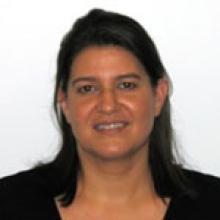
Mentor Bio
Dr. Razani has worked with a number of NIH Fellowship students, such as those in MARC, RISE, and COR programs and will be happy to mentor students and/or faculty in the BUILD program. She is currently the Chair of the Psychology Department. http://www.csun.edu/~ljr77544/
Research Projects
Dr. Jill Razani has two major research projects in the area of health disparities.
- The first study is to assess the relationship between neuropsychological test performance and everyday functional abilities of patients with early-stage dementia. The purpose of this study is to better characterize and find predictors of functional abilities of patients with dementia and those with mild cognitive impairment. Additionally, this study aims to better understand the relationship between patient functioning and caregiver burden.
- The second study in Dr. Razani’s lab is designed to examine cultural and acculturation factors that impact neuropsychological test performance of individuals from immigrant backgrounds. Factors such as bilingualism and level of acculturation are examined as they relate to neuropsychological performance in first, second and third generation immigrants.
Method
We will assess these factors over a one-year period to understand the rate of decline in neuropsychological and daily functioning, as well as caregiver burden.
Student Roles
Dr. Razani’s lab has research assistants at all levels from freshmen to master’s students. All students will learn the test battery for each project (i.e., the neuropsychological test battery) and those who master test administration, will be given the opportunity to administer the tests to research participants. All interested students will co-author a presentation to a regional scientific conference within their first year in the lab, and those students who continue in the lab past one year, will most likely present at national and/or international scientific conference.
Expectations
As students gain mastery in the lab, they will work more independently with scoring, data entry, data analysis, and dissemination of the findings (e.g., conference presentations or possibly journal publications).
Abraham Rutchick
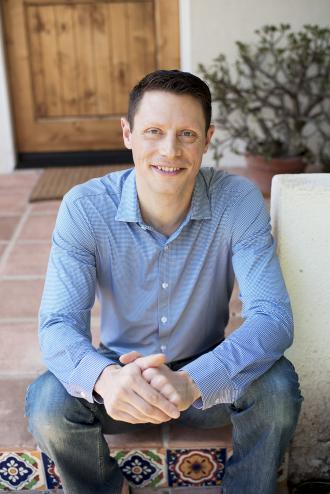
Mentor Bio
Hello! I grew up in Massachusetts, got my PhD at UC Santa Barbara, taught at Syracuse University, and have now been at CSUN for 13 years. In addition to studying psychology and technology, students in my lab work on health psychology, political psychology, moral psychology, and social perception. Visit my website for more information. Visit my website for more information.
Title of Research Project
Social Psychology and Emerging Technology
Background and Purpose
The technology that shapes our daily lives is changing more quickly than ever. My lab works on understanding how new technologies change the way we think, feel, and act, and also on how fundamental psychological theories can inform the way we interact with new technologies.
Methods
Mostly quantitative. We use a variety of methods, including lab experiments, surveys, archival analyses, and more.
Student Roles
My BUILD students work on all aspects of projects, including literature reviews, data collection, and study design. Typically they start by working with me on a project that I initiate (by designing stimuli and conducting the study) and progress to developing an independent research project.
Expectations
I expect my students to engage passionately with their research questions. The most important qualities - that I can't teach or help with - are curiosity and work ethic. If a student is excited and curious and passionate and works hard, they'll probably do very well. We'll work on writing, critical reading, statistical techniques, scientific communication, scientific thinking, and so on.
Conferences
SPSP (social psychology), APS (Association for Psychological Science), JDM (Judgment and Decision Making), the other APS (American Psychosomatic Society), SAA (Society for Ambulatory Assessment), SBM (Society for Behavioral Medicine).
Publications
Visit my website to view my publications.
Omar Ruvalcaba
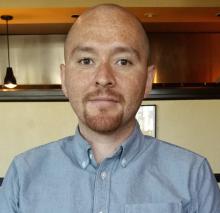
Mentor Bio
I grew up in Inglewood and my parents came to the United States from Zacatecas, Mexico. They decided to stay in Mexico to provide their children with educational opportunities. I’m a proud first-generation student. My scholarship is largely guided by the minors I completed in Education and Chicana/o studies. I was interested in research that could change the lives of other first-generation students. I then went on to complete my developmental psychology Ph.D. with an emphasis in cultural psychology at the University of Santa Cruz, California.
In my research, I take a critical lens to understand the relationships between culture, gender, and institutional barriers to higher education opportunities.
I am committed to social justice approaches in researching equity in technology contexts. My research approaches focus on an emerging approach known as Intersectional Tech that draws on equity and intersectional focused research approaches. My research team and I have recently focused on unlearning approaches that maintain the status quo and learn and implement critical and liberation psychology approaches at the theoretical and methodological level. These are popular methods used by community psychologists.
My current research focuses on three main lines of research:
1. eSports and Video Games - In this line of work, I focus on issues related to equity in experiences during online gaming. In my research, I have studied women's experiences with harassment during online gaming. My team and I are currently exploring how gender influences the perception of women's gaming abilities and gamer's views of racism in online gaming. I'm exploring other future study areas, including understanding gaming culture norms and content analysis of the representation of different ethnic and gender groups in video games.
2. Social Justice Issues in University Education and STEM Careers - I am broadly interested in first-generation and minoritized students' experiences pursuing tech careers. My previous studies in these areas include:
- Latinas experiences as part of the tech workforce
- Mexican American children’s engagement in programing
- Understanding how Latina/o students participate in class and seek help during office hours
- Interviews with Latinx and Armenian students on how they navigate institutional, family, cultural, and gender expectations and how this relates to mental health.
Research Website http://www.tecc-lab.com. Personal Website www.omarruvalcaba.com.
Title of Research Project
1st Generation Immigrant Women and Men’s Experiences
Women’s Experiences While Gaming Online (or spending time online)
Concerns across Culture Regarding Cell Phone Use and Mental Health
Background and Purpose
The purpose of the research is to help address issues of equity regarding access to higher education and careers. Research in this lab draws on Psychology, Learning Sciences, and Educational research.
Research Questions or Hypothesis
How do first-generation immigrant women and men navigate institutional barriers and family responsibility to succeed in the university? What cultural strengths do different ethnic groups draw on to succeed at the college level? What are women’s experiences in online and in-person gaming circles?
Method
Qualitative, Content Analysis, Interviews, Surveys
Student Roles
study design, data collection, interviews, submitting posters to conferences.
Expectations
I expect that students come to my lab with a willingness to learn and go beyond their comfort zone. In addition, I expect that students will always follow through, feel comfortable asking questions, are excited or interested research that gives back to underserved communities.
Conferences Typically Attended
American Educational Research Association, Society for Research in Child Development, Society for Research on Adolescence, American Association of Hispanics in Higher Education, International Conference in the Learning Sciences, Popular Culture Association.
Publications
View my publications at my website.
Holli Tonyan

Mentor Bio
Before joining CSUN’s Department of Psychology in 2007, Dr. Tonyan was a Lecturer in Early Childhood Education at Monash University in Australia and a Postdoctoral Fellow in Psychology at the University of California, Santa Cruz. Ph.D. 2001, UCLA. Psychological Studies in Education. M.A. 2000, UCLA. Psychological Studies in Education B.A. 1996, Carleton College (MN). Psychology. http://www.csun.edu/~htonyan/
Title of Research Project
Relationships, Stress, and the Social Ecology of Early Child Care.
Background and Purpose
Caregiving is essential to maintaining close relationships, yet it also presents a range of potentially stressful experiences. Most research on caregiving focuses on what has traditionally been called “burden” or care that exceeds what caregivers think of as expected help. Yet, increasingly research suggests that how individuals respond to the day-to-day perturbations they face creates the conditions for health or disease. My current work examines what strains and sustains caregivers through the inevitable unpredictability of caregiving, particularly caregiving during the earliest years when babies, toddlers, and preschool-age children are developing rapidly. To do so, I document daily living for caregivers of young children. The long-term goal is to link this understanding of day-to-day experiences with studies of health and stress.
Research Questions or Hypothesis
What are the day-to-day activities that sustain and/or strain caregivers? What are the values and ideals that underpin their caregiving? Do values and ideals lead caregivers to understand their daily experiences differently?
Method
Central to my work is an in-depth semi-structured interview that asks caregivers to talk about their daily life: the Ecocultural Family Interview. I link that with a daily stress method: across 8 days, individuals provide saliva samples and wear an Apple Watch to assess their stress physiology on the same days that they complete a daily “diary” of stressful and positive experiences.
Analytic process
Using a mixed-method approach, my team and I (a) categorize caregivers according to how much love and affection are salient in their descriptions of their day-to-day life with children (b) conduct quantitative analyses of daily stressful and positive experiences, and (c) assay saliva for markers of stress (when funding is available).
Student Roles
This research can’t happen without a team of dedicated students. Students are involved in every step of the process, from interviewing to monitoring daily stress procedures to analysis and writing.
Expectations
I seek students who are curious about cultural approaches and methods and looking to take advantage of the many resources I’ve developed to help them learn about quantitative and qualitative methods. Through weekly individual meetings, we’ll work together to identify short-term and long-term projects.
Conferences Typically Attended
My “home” conferences are the Society for Research in Child Development, and the Child Care and Early Education Policy Research Consortium.
Other information for students seeking mentors
There are many opportunities in this rich research project for identifying related topics for student research: provider well-being and burnout, resourcefulness and strategies for coping with stress, cultural variations in what providers consider to be important for children to experience in their care, relationships between providers and children’s parents, and much more.
Publications
Mimura, Y., Cai, Y., Tonyan, H., & Koonce, J. (2019). Resource well-being among family child care business owners. Journal of Family and Economic Issues, 40, 408-422. https://doi.org/10.1007/s10834-019-09620-8
Paredes, E., Hernandez, E., Herrera, A., & Tonyan, H.A. (online first). Putting the “family” in family child care: The alignment between familismo (familism) and family child care providers’ descriptions of their work. Early Childhood Research Quarterly. https://doi.org/10.1016/j.ecresq.2018.04.007
Tonyan, H.A., Paulsell, D. & Shivers, E.M. (2017). Understanding and incorporating home-based child care into early education and development systems. Early Education and Development, 28, 633-639. http://dx.doi.org/10.1080/10409289.2017.1324243
Tonyan, H.A. (2017). Opportunities to practice what is locally valued: An ecocultural perspective on quality in family child care. Early Education and Development, 28, 727-744. http://dx.doi.org/10.1080/10409289.2017.1303304
Key Words – social ecology, child care, physiological stress response, sociocultural theory, ecocultural theory.
Yolanda Vasquez-Salgado
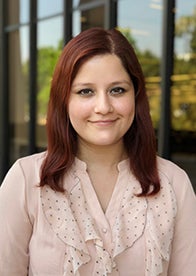
Mentor Bio
I grew up in Oxnard, California, and I am proud to be a first-generation college student and daughter of immigrant parents from Mexico. I believe that my background and experiences continue to serve as a strength in my research inquiries of which I am very passionate. My program of research centers on investigating the role of sociocultural forces (i.e., sociodemographic, cultural mismatch) in underrepresented students’ health and academic adjustment during the transition to college. I received my Ph.D. in Developmental Psychology, with a minor in Culture, Brain and Development, from the University of California, Los Angeles. I am also a proud graduate of the Bachelors and Masters programs in Psychology at California State University, Northridge.
Title of Research Project
Cultural Mismatch, Health and Academic Adjustment During the Transition to College Among Latinx Youth (Culture, Health and Development Laboratory)
Culture, Health and Development Laboratory Website: — https://chdlab.weebly.com
Background and Purpose
Cultural mismatch occurs when collectivism learned at home mismatches with the individualism of the university environment. In order to investigate this phenomenon, I have utilized a triangulation of methods (qualitative, survey, behavioral experiment). I have discovered that cultural mismatch varies in form (e.g., family obligations-academic obligations, peer-peer), impacts health (mental, physical) and academics (inability to concentrate or study, poor grades) and is experienced by Latinx first-generation college youth as well as first-generation college students from diverse backgrounds. More recent pilot data that we have collected has revealed that cultural mismatch relates to biological and clinical markers of health (e.g., diurnal cortisol, body-mass-index).
Research Questions
1. What are the longitudinal trajectories of cultural mismatch over time?
2. Does cultural mismatch play a role in students’ health (self-reported mental and physical health; biological and clinical markers of health) and academic adjustment outcomes over time?
3. What is the larger mechanism involving associations between cultural mismatch, health and academic adjustment outcomes over time?
4. Are there resilience factors that protect students against cultural mismatch and its associations?
Method — A longitudinal study will be employed. Across 3 separate time-points, Latinx freshmen will complete an online survey that assesses various types of cultural mismatch and health and academic adjustment outcomes, complete an at-home health activity that measures the stress hormone, cortisol, and take part in an in-person session where we will gather additional indicators of health (e.g., heart rate and blood pressure, body-mass-index). Analytic techniques include correlation, regression, mediation and profile analysis. There may also be opportunities to conduct more advance statistical modeling.
Student Collaborator Roles
Students will be expected to aid with literature reviews, as well as the collection, organization and processing of data. They will also learn how to analyze and interpret data. There will be opportunities for students to present the results of the data in the form of an APA-formatted presentation or manuscript.
Expectations
My office and lab are both located within close proximity in Lilac Hall; given their close proximity, I see my students on a frequent basis. Students in my lab receive a lot of training and mentoring. At the same time, students are expected to take the initiative to extend their knowledge base in theory and statistics by attending workshops and taking advanced courses as these experiences will aid them in making the most of their experience as emerging scholars in the field. It is also highly suggested for students to seek further opportunities for scholarships, awards and programs as these will further aid them in their development.
Conferences
Potential conferences that we may attend are the Society for Research in Adolescence (SRA), Society for Personality and Social Psychology (SPSP), Society for the Study on Emerging Adulthood (SSEA) or the Society for the Psychological Study of Culture, Ethnicity and Race, Division of the American Psychological Association.
Social Work
Allen Lipscomb

Mentor Bio
I grew up in the San Fernando Valley and completed my K-12 grade education from LAUSD. Upon completing high school I attended Santa Monica College and earned my Associates of Arts degree in Liberal Studies. I then transferred to UC Santa Barbara where I double majored in both Psychology and Black Studies. Following my studies at UCSB I got accepted at USC where I ultimately earned a master’s degree in Social Work. Five years after receiving my MSW degree, I decided to go back to school to get my doctorate in clinical psychology (PsyD) with an emphasis in marriage, family and child psychotherapy from Ryokan College. In addition, Dr. Lipscomb earned a post-doc. certification in Diversity and Inclusion Practices from Cornell University. If it were not for my mentors over the years who modeled and believed in me—I would not be where I am today as an educator, researcher and practitioner. I am a clinical psychologist by highest degree obtained and a Licensed Clinical Social Worker in the state of California. In addition, I am a social scientist and my areas of research are centered around the psychiatric epidemiology among racialized and marginalized individuals who have experienced trauma (i.e. complex trauma, traumaticgrief and race-based trauma). Specifically, I have conducted and advised numerous qualitative research studies (clinical case studies, interviews, ethnographies, etc.) on racialized Black identified men across the Black/African Diaspora (specifically in the United States) exploring their grief, loss and complex-trauma experiences (i.e. special attention to physical health and mental health). And finally, I am an author and published a book titled: Black Male Grief Reaction to Trauma: A Clinical Case Study of One Man's Treatment.
Title of Research Project
Exploring the Experiences of African American/Black Men During COVID Pandemic.
Background and Purpose
The purpose of this qualitative study is to explore the experiences of African American/Black men who as it relates to COVID 19 pandemic. Utilizing narrative interviews, participants will be asked to share their experiences as it relates to the covid 19 pandemic. Specifically, their emotive experiences around having navigating work, school, family obligation, etc. The information gathered through qualitative inquiry methodology can provide insight and feedback of the unique experiences faced by Black men who have been impacted by the pandemic giving special attention to their grief, loss , health and work experiences.
Research Questions or Hypothesis
What are the unique experiences of African American/Black men who have been diagnosed with diagnoses with COVID and or had a close family member diagnosed with COVID? How do African American/Black men navigate their familial relationships, health, spirituality, mental health and loss experiences during this time? How can health and human service professional better assist and provide culturally appropriate (anti-oppressive and antiracist) services to this population?
Method
Qualitative phenomenological inquiry methodology
Student Roles
Data collection, transcribing data, conducting interviews, submitting abstracts to conferences.
Expectations
I expect students to come ready to learn innovative ways to conduct qualitative research with marginalized communities who are often left out within scholarly spaces. In addition, to learn how to be an anti-oppressive researcher.
Conferences Typically Attended
African American Mental Health Conference; National Association of Social Workers Conference; National Association of Black Social Workers Conference; International Conference on Health, Wellness and Society; Ethnographic and Qualitative Research Conference; Black Mental Health Conference.
Publications
See CSUN webpage
Urban Studies and Planning
Zeynep Toker

Mentor Bio
As a proponent of community design, I have been working with communities in different cultural settings helping them shape their built environments. My experience of working with communities includes projects such as Designing Dynamic Environments for the Performing Arts in Cambridge, UK; Sandhills Community Center in Spring Lake, NC; Laguna Child and Family Education Center in Laguna, NM; Programming of County Office Buildings in Pamlico County, NC; and Urban Revitalization of Downtown Mebane, NC. I have also designed and participated in research projects utilizing different methodologies with quantitative and qualitative methods of data collection. My research agenda aims to understand spatial representations of cultural, social and gender identities in everyday lives of individuals and communities, both placeless and place-bound. My research interests focus on the ways to accommodate user needs and preferences generally in built environment, especially in housing. Ph.D. 2004, North Carolina State University, M.A. 2000, Middle East Technical University Turkey, B.A. 1998, Middle East Technical University Turkey
Background and Purpose
This research is an attempt to understand Latinas’ experiences in relation to physical activity. Research shows that Latinas engage in leisure time physical activity substantially less than non-Latino white women. Research focusing on Latinas and physical activity also suggests that gender role identities in relation to cultural elements might explain the difference. The purpose of this study is to explore Latinas’ gender role identities, cultural identities, and daily routines in relation to physical activity and neighborhood characteristics.
Research Questions or Hypothesis
What role do gender role identities, and cultural identities play among Latinas in their participation in structured and unstructured physical activity in the context of their physical environment affordances?
Method
This will be a mixed methods methodology including surveys, questionnaires and focus group interviews.
Student Roles
Students will prepare the tools and conduct surveys, questionnaires, and focus group interviews in the field. For analysis they will be introduced to a variety of coding methods, such as constant comparative method and manifest and latent content analysis.
Expectations
There will be opportunities for students to develop their own research interest within the larger framework of this research project.
Conferences Typically Attended
Environmental Design Research Association Conference, American Collegiate Schools of Planning Conference, American Public Health Association Conference, American Planning Association Conference
Publications
- Toker, Z., Minassians, H. (2018). “Miscalculated opposition of businesses to street improvements” Proceedings of the Institution of Civil Engineers – Urban Design and Planning. 171:2, 55–60
- Rigolon, A., Toker, Z., & Gasparian, N. (2018). Who has more walkable routes to parks? An environmental justice study of Safe Routes to Parks in neighborhoods of Los Angeles. Journal of Urban Affairs,40(4), 576-591.
- Toker, Z. (2015) “Walking beyond the Socioeconomic Status in an Objectively and Perceptually Walkable Pedestrian Environment” Urban Studies Research, vol. 2015, Article ID 919874, 15 pages.
- Toker, Z., Minassians, H. (2012) “Good cities and healthy communities in the United States” Urban Design and Planning Journal, Special Issue on Quality of Life. 165:3, 137-145.
- Toker, Z., Pontikis, K. (2011) “An Inclusive and Generative Design Process for Sustainable Urbanism: The Case of Pacoima” Journal of Urbanism: International Research on Placemaking and Urban Sustainability 4:1, 57-80.
- Toker, Z. (2010) “New Housing for New Households: Comparing Cohousing and New Urbanist Developments with Women in Mind”Journal of Architectural and Planning Research 27:4, 325-339.
- Toker Z. (2007) “Recent Trends in Community Design: The Eminence of Participation” in Design Studies. 28.3, 309-323.
- Toker, Z., Toker, U. (2006) “Community Design in its Pragmatist Age: Increasing Popularity and Changing Outcomes.” METU Journal of the Faculty of Architecture 23:2, 155-166.
- Toker, Z. (2001) “Influences of Cultural Differences on the Formation of ‘Home’ Constructs,” in International Association for People-Environment Studies (IAPS) Autumn 2001 Issue of the Bulletin of People-Environment Studies: Special Issue on Housing.
For more publications and conference presentations: https://www.csun.edu/social-behavioral-sciences/urban-studies-planning/zeynep-toker
Mintesnot Woldeamanuel

Mentor Bio
Dr. Mintesnot Woldeamanuel enjoys all aspects of urban planning but he is most interested in the functional relationship between urban land use and transportation. He has conducted extensive research and written on the relationship among travel behavior, the environment and urban form focusing on transportation mode choice and spatial analysis. His research interest includes public transportation policies and its impact on the environment, spatial and network analysis, mode choice, urban transportation service quality assessment and application of Geographic Information systems (GIS) for transportation. He is also interested in comprehensive urban transportation planning, urban land use planning, travel behavior analysis, community development and sustainability. Prior to joining California State University, Northridge, he worked as an Assistant Professor in the Planning and Community Development Program of Saint Cloud State University, and as a Research Fellow in Transportation Research Institute of German Aerospace Center (DLR). Ph.D., 2007, Hokkaido University, Urban and Environmental Engineering/planning M. Eng., 2004, Hokkaido University, Urban and Environmental Engineering/planning B.Sc., 2001, Ethiopian Civil Service University, Urban Planning Adv. Diploma, 1996, Ethiopian Civil Service University, Urban Engineering.
Background and Purpose
Our cities face increases in obesity, and deceases in walking, bicycling and physical activity. The built environment that encourages automobile use and sedentary living is one of the factors responsible for the poor health outcome of urban residents.
Research Questions or Hypothesis
The goal of this research is to create correlational and causal relationship between walkable/bikable communities and health outcomes. The primary dependent variable is Obesity (measured in BMI) and the independent variables include built environment variables that encourage physical exercise (such as sidewalk quality, availability of biking infrastructure, neighborhood density, distance between activity places, availability of parks etc.).
Method
The data include a survey, filed observation on the physical characteristics of the built environment and secondary data on health outcomes.
Student Roles
Students are responsible for designing surveys, gathering primary and secondary data and making statistical and spatial analysis.
Expectations
Expectations — Students will develop research and critical thinking skills that will help them succeed in their academic and professional endeavors.
Publications
BOOKS - Mintesnot Woldeamanuel (2016). “Concepts in Urban Transportation Planning: The Quest for Mobility, Sustainability and Quality of Life”, McFarland Publishers. https://mcfarlandbooks.com/book-2.php?id=978-0-7864-9966-3
Mintesnot G. Woldeamanuel. (2011). “Planning and Decision Models for an Integrated Public Transportation: Tools for a Developing City”, VDM publishing
For a full list of publications in peer-reviewed journals and conference presentations, please visit: https://www.csun.edu/social-behavioral-sciences/urban-studies-planning/mintesnot-woldeamanuel
